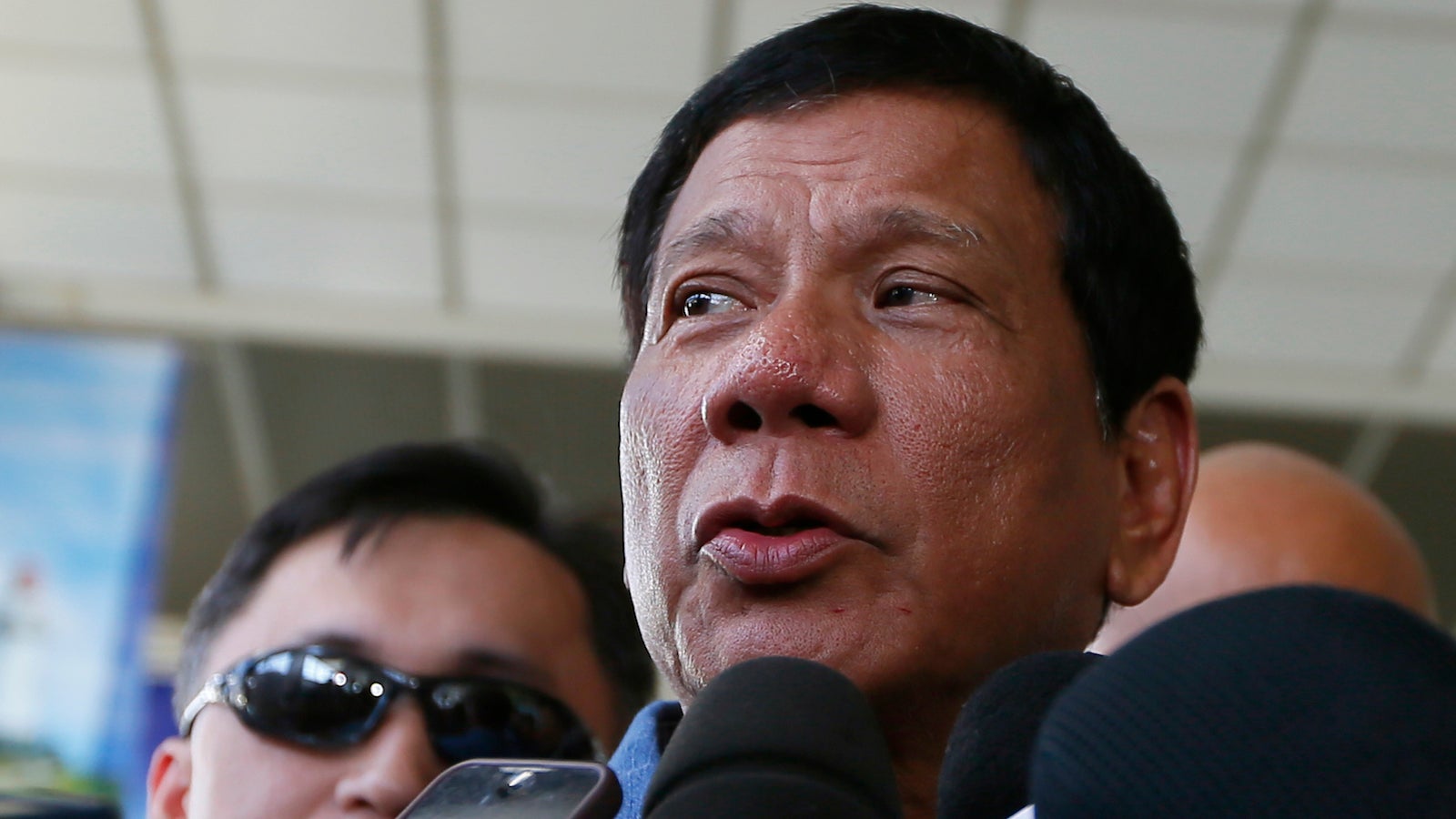The Philippines’ new president is no “Trump of the East,” but he’s terrifying in his own right
The newly elected president of the Philippines is a tough-talking sexist who thrives off of hate speech and populist anger. If this reminds you of another high-profile US politician, it’s probably no surprise that the international media has christened Rodrigo Duterte “the Trump of the East.”


The newly elected president of the Philippines is a tough-talking sexist who thrives off of hate speech and populist anger. If this reminds you of another high-profile US politician, it’s probably no surprise that the international media has christened Rodrigo Duterte “the Trump of the East.”
But while there may be superficial similarities between the two men, the comparison is not very useful. (For one thing, Duterte himself supports Hillary Clinton.) To understand Duterte’s rise to power, it’s far more productive to take a look at the historical experience of the marginalized people in the poorest island of the Philippines.
The Philippines is a southeast Asian country, but it is predominantly Christian and English-speaking. It has periodically been the subject of campaigns for American statehood; just 80 years ago, Filipinos carried US passports. If the Philippines had joined the US, it would be a red state. It is socially conservative and angry—the perfect breeding ground for right-wing populism.
In recent years, the Philippine economy has grown at a breakneck pace under the outgoing administration of Benigno Aquino III. But everyday annoyances have made people impatient: traffic has turned Manila highways into parking lots, government bureaucracy remains inefficient, and the corner cop still demands bribes. And although the Aquino government has reported a decline in industrial-size meth labs, the country is still one of East Asia’s highest users of crystal meth.
Duterte campaigned on a law and order platform, vowing to “suppress” criminality and drugs within three to six months of his inauguration. He’s suggested that the public invest in funeral parlors, because there will be a greater need for them once he’s in power.
Duterte is a sexist who never fails to brag about his womanizing. He supports the vigilante killings of criminals and has faced allegations of corruption. But voters have overlooked all of this because they believe in his political will to right whatever wrongs plague them.
His supporters fall into two primary categories, each indicative of his capacity to serve as a kind of Rorschach test for very different people. A good proportion of Duterte’s supporters are rich, SUV-driving misogynists in Manila who actively rejoiced as the bully (Duterte) picked on the nerd (his opponent, Mar Roxas) in public debates. They laughed as their candidate cracked his famous joke about wanting to be first to rape an Australian missionary.
But Duterte’s original constituency is distinct from, and opaque to, the bros of Manila. He is a representative of the marginalized island of Mindanao.
The Philippines is divided into three island groups: Luzon, the Visayas islands, and Mindanao. Twelve presidents have come from Luzon, and three from three from the Visayas. But none, until Duterte, have hailed from Mindanao.
Eleven out of the 20 poorest provinces in the Philippines in Mindanao, and it is the hotbed of a separatist Islamic insurgency. Given its unique history as home to the country’s Muslim minority, it fits uneasily in the Luzon-centered narrative of Philippine nationalism. Residents of Manila rarely discuss Mindanao’s politics. When they do, they tend to caricature it as a violent breeding ground for terrorists.
Duterte was the candidate of law and order, but he was also the candidate of regional representation. Journalist Carolyn Arguillas, who has covered the mayor for decades, notes that Duterte was the “lone candidate among five” to espouse changing the political system from its current, highly centralized setup. Instead, Duterte proposed a federal, parliamentary system in that would give underdeveloped regions outside Luzon greater autonomy in both political and economic matters.
Duterte’s election represents the country’s geographic margins invading its center. This is evident even in the way Duterte talks. Compared to other politicians, he rarely speaks in the Tagalog of “imperial Manila.” The mayor prefers his native Visayan (more commonly spoken in Mindanao). When addressing a national audience, he speaks in a hard, Visayan-accented English. There is also no Tagalog or English equivalent for his Visayan rhetorical strategy of bugal-bugal—a form of mocking exaggeration directed at incredulous interlocutors. When he said he would fatten the fish of Manila Bay with the bodies of dead criminals, for example, he was engaged in bugal-bugal.
None of this excuses the mayor for the hate speech that he and his followers unleashed in the course of the campaign. Duterte is a con artist, and he is dangerous. He campaigned on the slogan “change is coming,” but his prospective cabinet is an all-boys club of former bureaucrats from the corrupt and discredited government of Aquino’s predecessor, Gloria Macapagal-Arroyo. One of his first orders as president will be to arm neighborhood civilians to combat drugs pushers.
The guy deserves criticism from Western media. But it’s misleading to compare him to a privileged New Yorker with a comb-over. Unfortunately, dangerous leaders these days come in many forms.